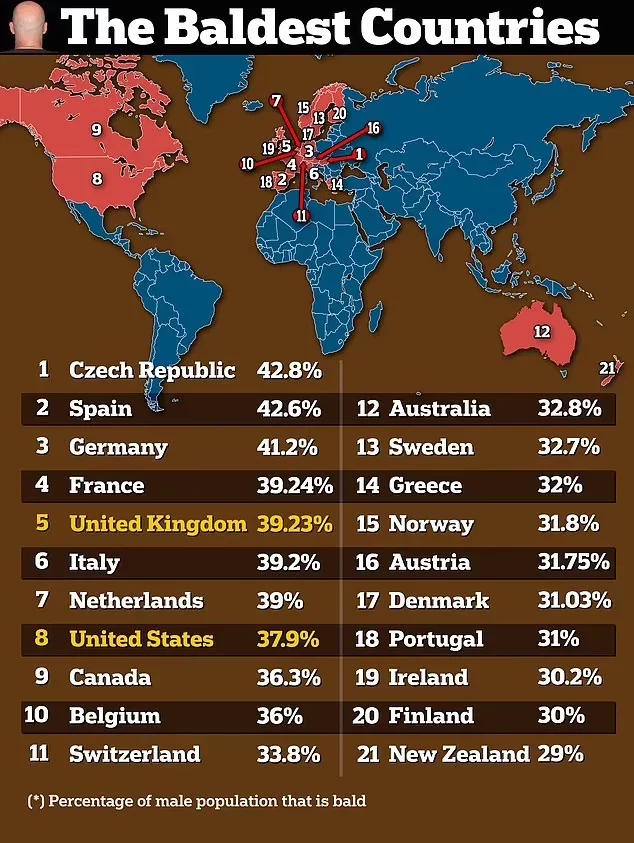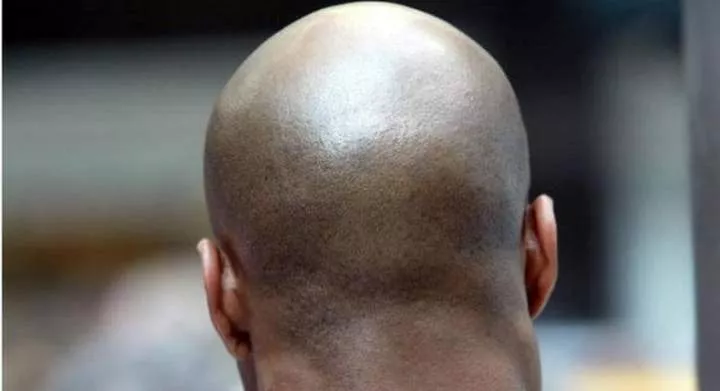
Although research shows that male pattern baldness eventually affects two out of three men, three continents don't show up in the top twenty. A map reveals the 21 countries where men around the world are most likely to be bald. However, African, Asian, and South American countries don't make it on the list. Lucky? Perhaps. Here's what you should know about the causes and how to give yourself a chance at retaining your hair.
Contrary to the assumption that excess testosterone causes baldness, it is actually the sex hormone dihydrotestosterone (a by-product of testosterone) which interferes with the hair growth cycle. It is the inherited sensitivity to this by-product sex hormone which leads to finer hair, receding hair line and baldness.
Figures compiled by World Population Review, based on data from Vantage Hair Clinic, revealed the 21 baldest countries, many of which are dominated by white people, a group that tends to lose their hair faster than other races.
Researchers found men in the Czech Republic had the smoothest heads, with more than 40 per cent of its adult male population suffering from hair loss.
Czech Republic - 42.8%
Spain - 42.6%
Germany - 41.2%
France - 39.24%
United Kingdom - 39.23%
Italy - 39.2%
Netherlands - 39%
United States - 37.9%
Canada - 36.3%
Belgium - 36%
Switzerland - 33.8%
Australia - 32.8%
Sweden - 32.7%
Greece - 32%
Norway - 31.8%
Austria - 31.75%
Denmark - 31.03%
Portugal - 31%
Ireland - 30.2%
Finland - 30%
New Zealand - 29%

In all 21 countries, at least one-quarter of the adult male population was noticeably balding or completely bald.
According to the American Hair Loss Association (AHLA), 95 per cent of hair loss in men is caused by androgenetic alopecia, also known as male-pattern baldness, a result of the genetic sensitivity to dihydrotestosterone (DHT).
Hair follicles sensitive to DHT shrink over time, slashing the lifespan of each hair until the follicles stop producing hair altogether.
The chance of going bald increases with age. This is because as men age, testosterone converts to DHT, so those with a sensitivity to it tend to eventually lose their hair.
According to the AHLA, 85 per cent of men will have significantly thinner hair by age 50, and 25 per cent will start balding before they reach 21.
Some research suggests Caucasian men are more likely to go bald than other races.
Nutrition and lifestyle
However, a 2019 review in the journal Dermatology and Therapy suggested that deficiencies in vitamins B12 and D, biotin, riboflavin, and iron could be responsible for poor hair growth.
Diet may also be a factor in balding. The Czech cuisine is heavy in thick soups and stews, meat dishes, and starches, as well as beer. This is also a similar trend in Britain. These foods are significantly less likely to have high amounts of vitamins and minerals needed for hair growth.
A 2018 review in the journal Nutrients found 95 per cent of the surveyed population in the Czech Republic was vitamin D deficient while the National Institutes of Health (NIH) found that 42 per cent of Americans are vitamin D deficient.
New Zealand came last with about 29 per cent of men having bald heads. This is attributed to the fact that the country has a large Maori population, an indigenous Polynesian group, who are less likely to go bald than white men.















Comments